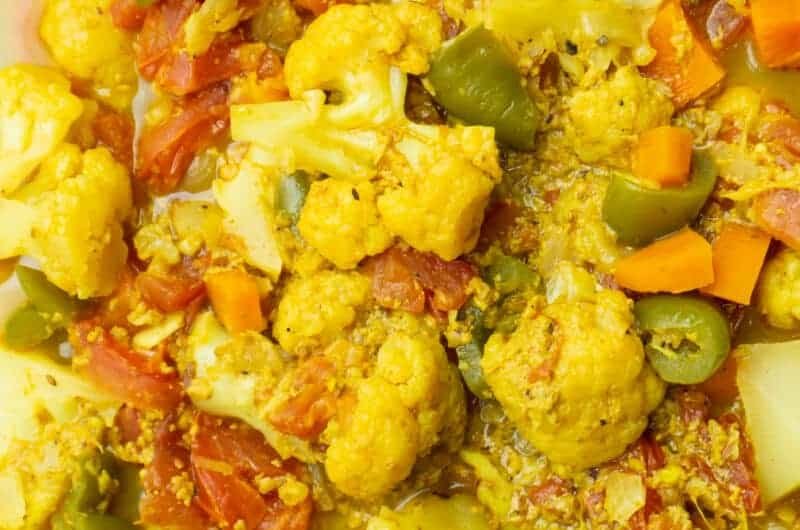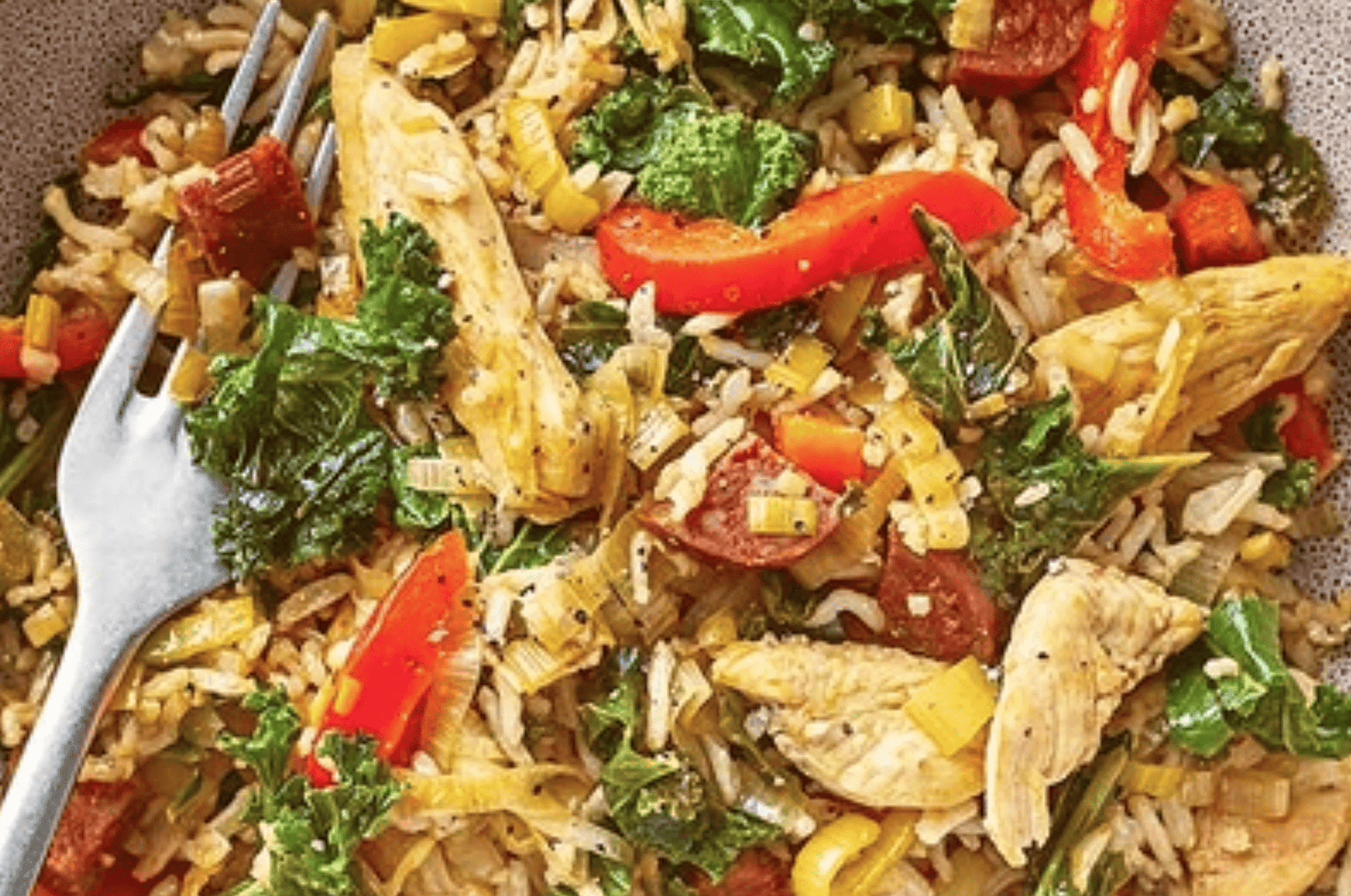This is my super simple, Indian-Inspired Mixed Vegetable Curry recipe loaded with iconic Indian spices to bring warmth and heat, cooked in a coconut milk sauce and loaded with plenty of the good stuff: Veg!
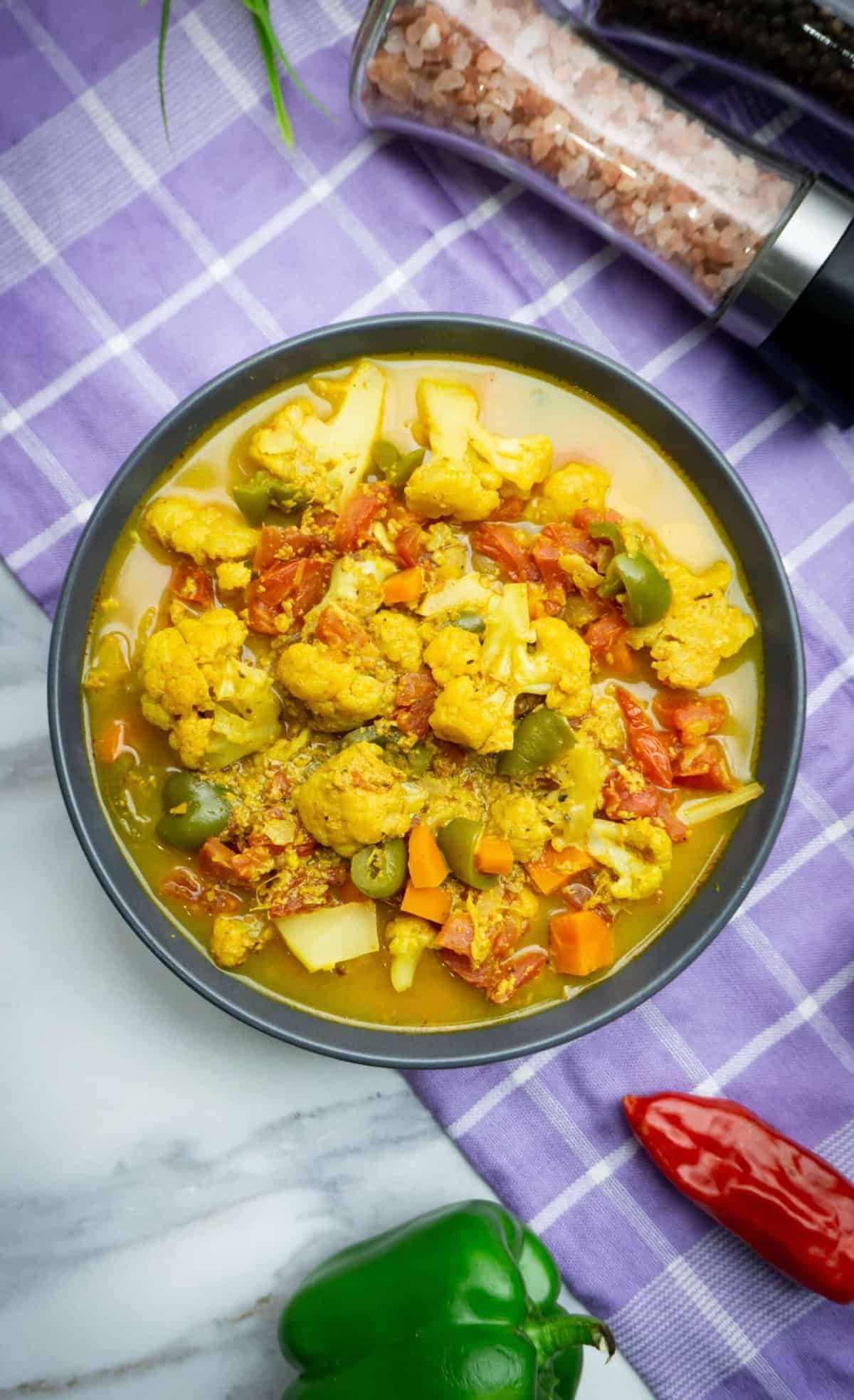
My veggie-loaded curry is the ultimate midweek meal. It’s full of goodness, packed with flavour, can be frozen and is a great way to use up any vegetables sitting in the bottom of the fridge, from green beans to sweet potatoes.
What are the Best Spices to Put In a Curry?
Some spices are essential in any curry, including cumin seeds, coriander powder and turmeric powder. You can also buy ready-to-go spice powders, which contain all the essentials if you don’t want to buy individual jars.
What are the Best Vegetable to Put In a Curry?
Vegetables that hold up well in curry include potatoes, carrots, peas, bell peppers, aubergine and cauliflower. Others like spinach and kale work well, too but must be added towards the end of the cooking.
How to Make My Mixed Vegetable Curry
A detailed recipe with full quantities can be found in the recipe card at the bottom of this page.
Step 1: First, you need to cook the onions. Onion forms the base for most curries. It is what gives it that subtle sweetness. So place a pan over a medium flame, heat oil and cook the onions for 5 to 10 minutes.
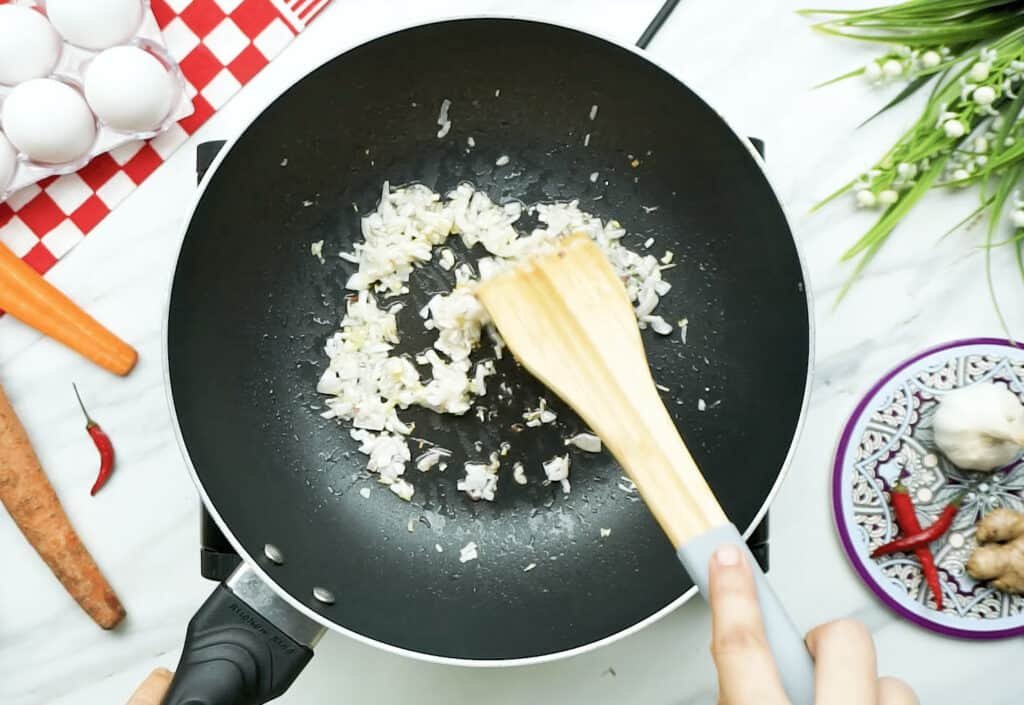
Step 2: Of course, alongside onion, it’s fresh ginger, chilli and garlic, which are essential core ingredients of any curry, so get those cooked too. I like the slightly bitter flavour you get from green chillies, but red chillies would work well here too.
You want to add them once the onion is cooked and soft otherwise, you risk burning the garlic. Burnt garlic will ruin any curry.
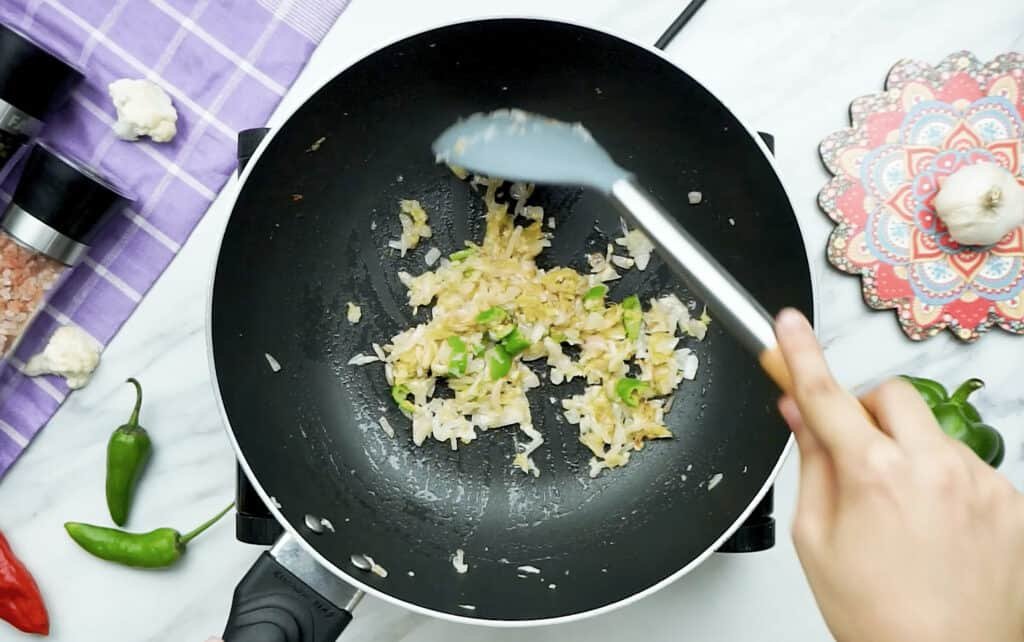
Step 3: Now you’ve got the perfect base, it’s time to add warmth and flavour with spices. I like using ground cumin, coriander, turmeric, dried chilli, and garam masala. But I’ve included a few other spices you could opt for below.
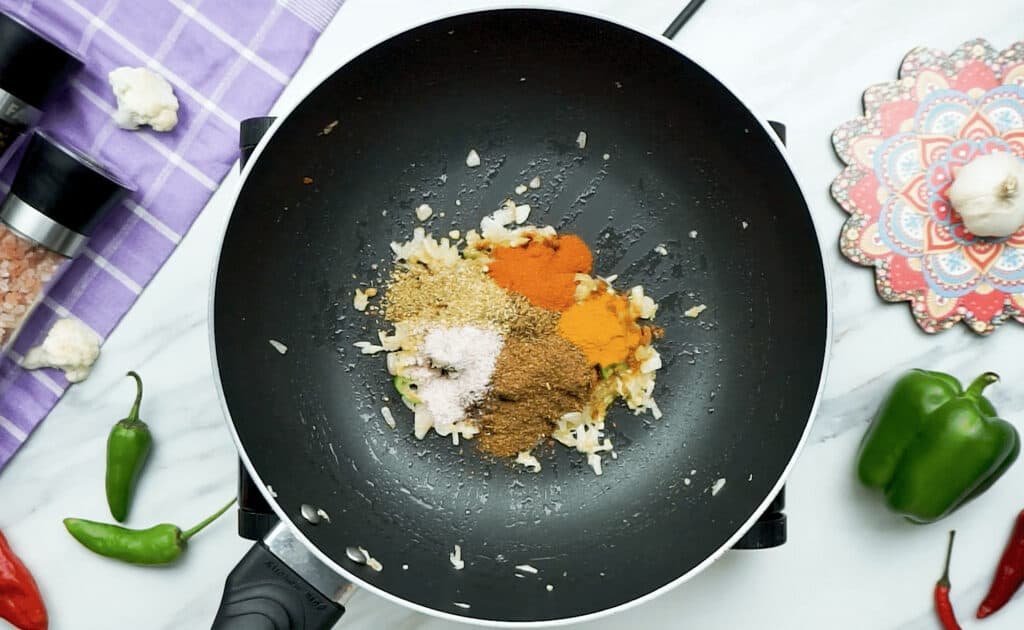
Step 4: Now it’s time to add in the good stuff. Tip all your vegetables into the pan and give them a good toss to coat them all evenly. You want to impart as much of the spice into each vegetable, so you end up with a delicious curry.
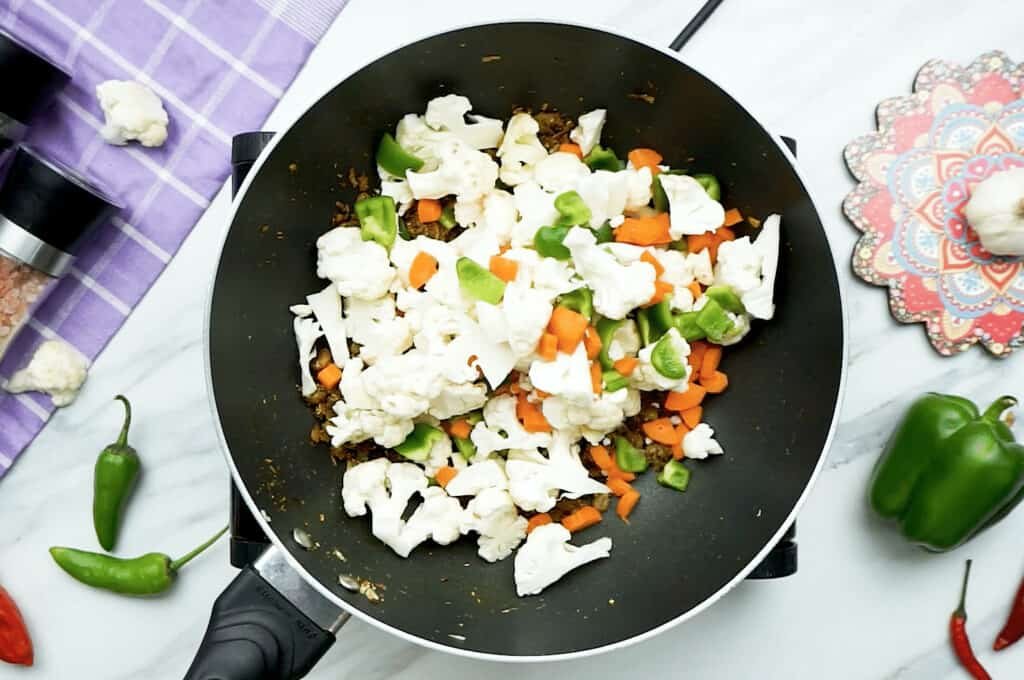
Step 5: All you currently have is curried vegetables. Delicious, of course, but not a curry or a complete dish. This is why you now need to pour in your coconut milk and tinned tomatoes with all their juices. Stir everything then drop the heat.
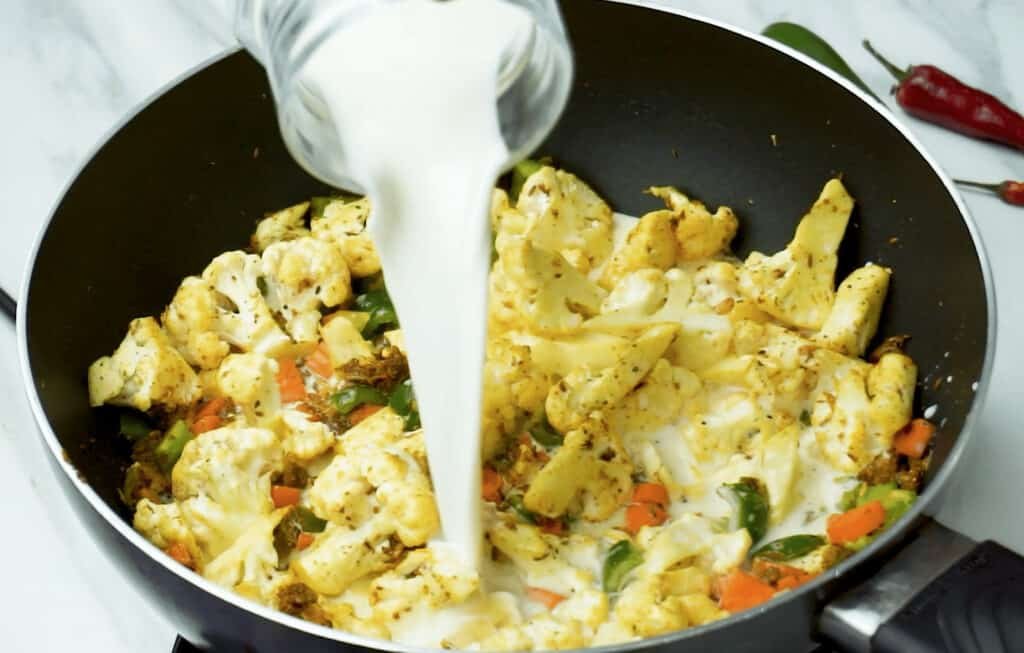
Step 6: Allow the curry to simmer for 20 minutes or so. This will give the sauce time to reduce so it’s thick and loaded with flavour but will also allow the vegetables to fully cook.
You may want to stir it every so often so nothing sticks to the bottom or sides. If it has thickened too much then add some water.
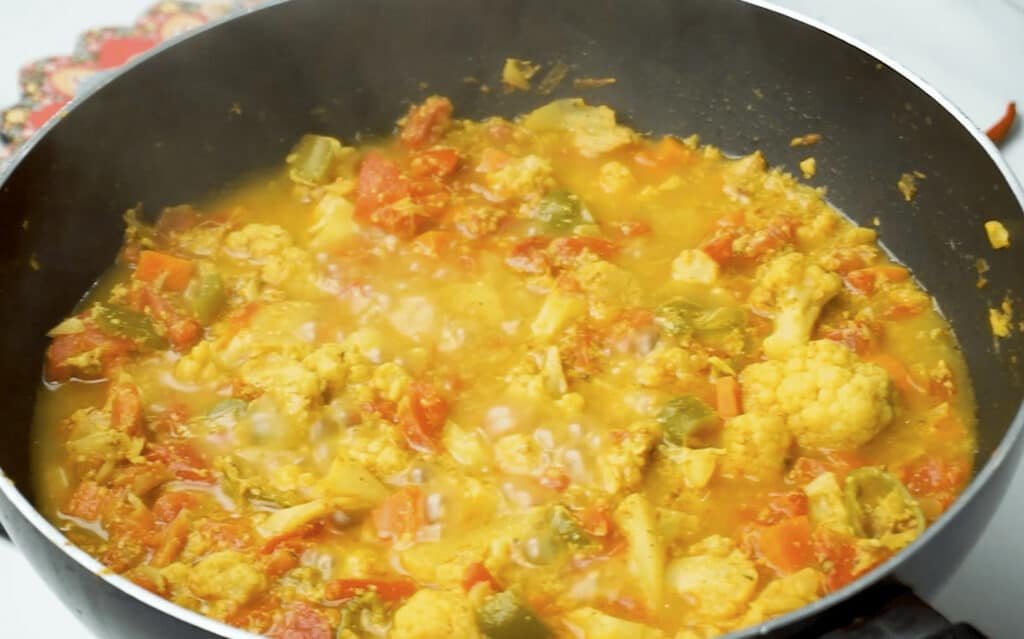
Step 7: Once the vegetables are cooked, give the curry a taste and season accordingly. If it’s a bit bland, give it a pinch of salt. If it’s a bit spicy, stir through a little yoghurt or lime juice. You can now serve it up with basmati rice, naan bread and raita.
Why Is My Vegetable Curry Bland?
If you have used old or insufficient spices, your curry could be bland. It’s also important to toast them lightly before adding your vegetables and liquids to help them release their flavour.
Serve
Once you’ve made your vegetable curry, there are a few things you may want to serve alongside it:
- Indian Breads: You could serve so many different bread types alongside this curry. I always opt for parathas as they aren’t too filling but work perfectly for soaking up the sauce but you could also serve the curry with chapatis or naans.
- Jeera Rice or Cumin Rice: Give your plain basmati rice and hit of flavour by adding cumin seeds into the mix. Suddenly the rice isn’t just a side dish but also a star of the meal.
- Fresh Coriander Leaves: I know, not a side dish, but a sprinkling of coriander leaves across the top can really finish off the curry, giving it something fresh.
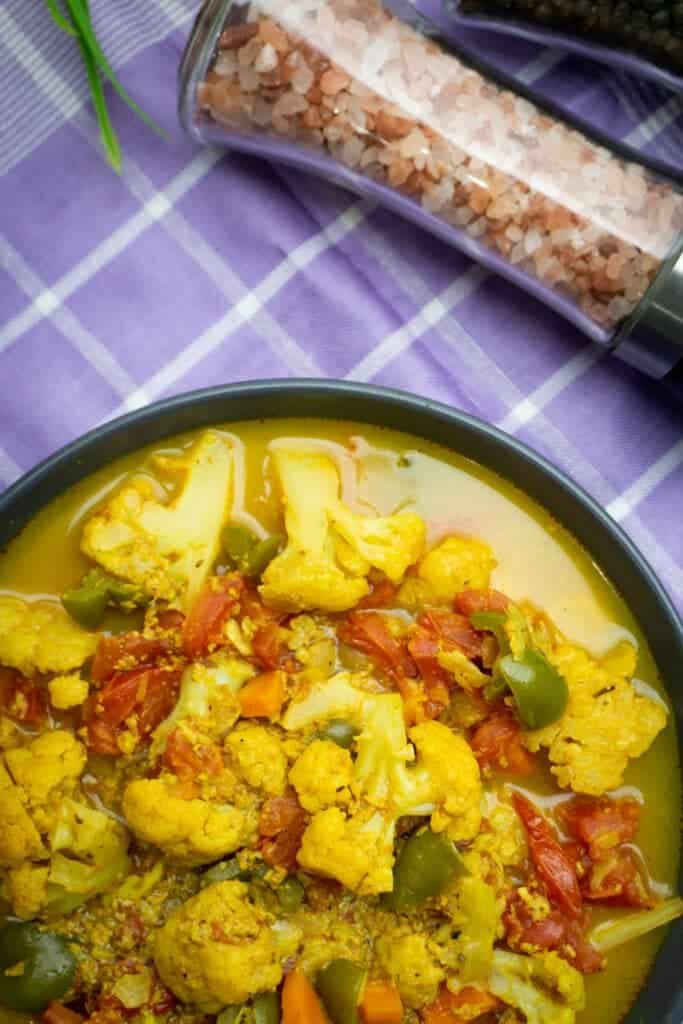
Tweak
My mixed vegetable curry recipe is the perfect starting point. There are several tweaks you can make if you want to make it spicier, nuttier, more filling or even easier:
- Add More Heat: My curry is designed to please the whole family. That does mean it can be a little mild for some palates. If you want to blow your socks off, then add more green chilli or a pinch of red chilli powder.
- Change the Veg: There are no hard and fast rules about the different vegetables you have to use in this mixed vegetable curry recipe. The clue is in the name, after all. It’s just a mix of veg! Green peas, French beans and sweet corn would all work.
- Make It Nutty: I’m not too fussed about how authentic this is, I love to give my curry a nutty twist by adding in a couple of spoonfuls of nut butter. Cashew butter works great, but peanut butter will work just as well if that’s all you have.
- Change the Spices: Ultimately, when making a curry you want to use plenty of aromatic spices. I’ve kept things pretty standard in my recipe but you could include any spice mix you fancy including fenugreek (or kasuri methi), cayenne pepper, Kashmiri chilli powder or fennel.
- Go Drier: If you’re not a fan of a wet, loose curry, then opt for coconut cream versus coconut milk. If you want a completely dry curry, then just use a handful of fresh tomatoes or tomato puree instead of the tinned tomatoes.
- Be Lazy: If you haven’t got all the spices listed or you want to make your life a little easier, then pick up a jar of curry powder and use this in place of the spices. It will provide you with a fairly decent base for any curry.
- Bulk It Out: If you want to make it even more filling then add a handful of cooked shredded chicken to make a chicken curry or fry a few cubes of paneer and stir this through for a veggie paneer curry.
Store
So you’ve made it but haven’t had a chance to eat it all? Well, what do you do with it?
Do Does Mixed Vegetable Curry freeze well? Yes
Can you refreeze Mixed Vegetable Curry? No
Refrigerate: My cooked vegetable curry can typically be stored safely in the refrigerator for about 3 to 4 days in a covered airtight container.
Freeze: To freeze, allow it to cool completely, then transfer it to an airtight, freezer-safe container or a heavy-duty freezer bag. Make sure to leave some space for expansion, then seal and freeze. You can learn more about freezing vegetable curry here.
Reheat: To reheat this vegetable curry, you can use a microwave or a pot on the hob. In a microwave, heat in a microwave-safe dish for 1-2 minutes, stirring occasionally, or on the hob, simmer gently over low heat until heated through.

